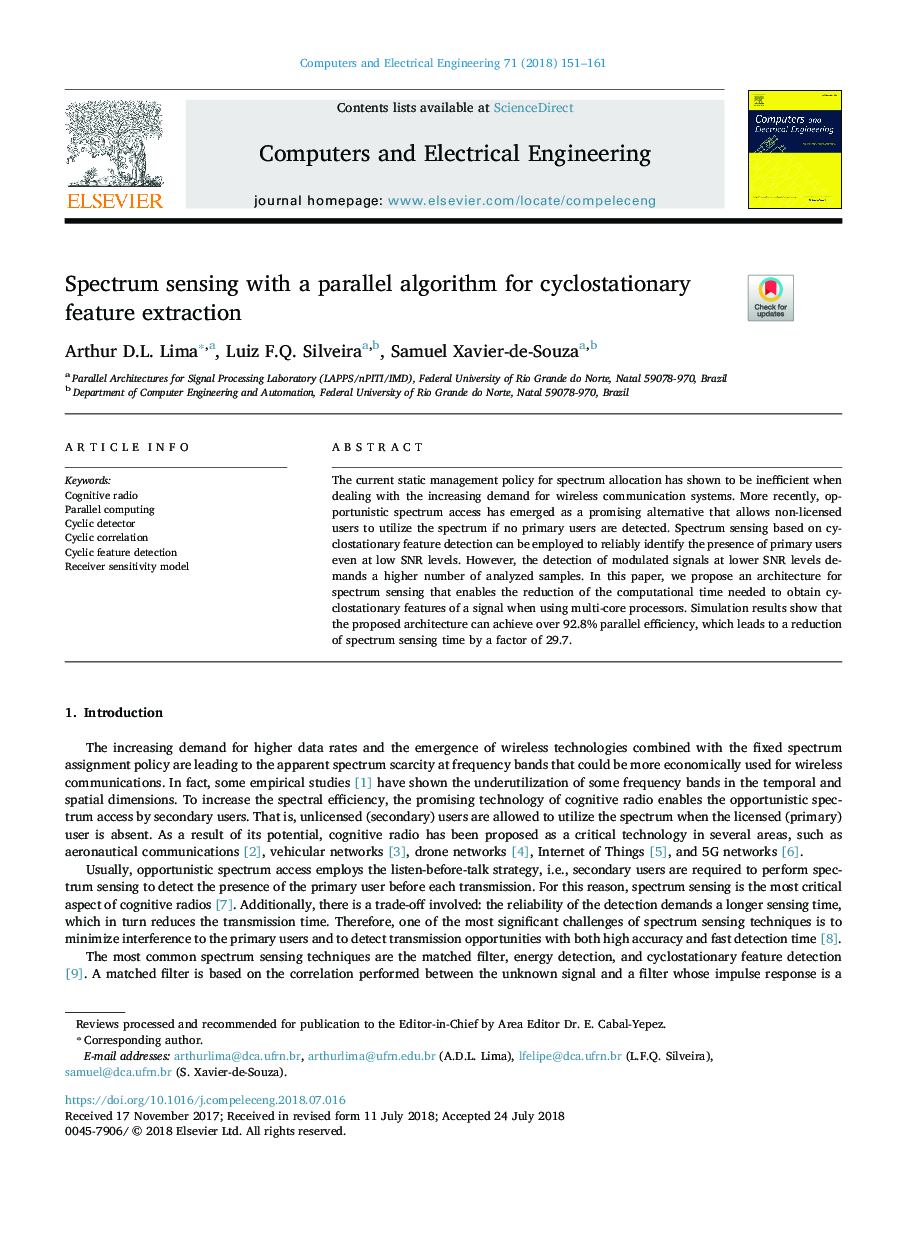| Article ID | Journal | Published Year | Pages | File Type |
|---|---|---|---|---|
| 6883243 | Computers & Electrical Engineering | 2018 | 11 Pages |
Abstract
The current static management policy for spectrum allocation has shown to be inefficient when dealing with the increasing demand for wireless communication systems. More recently, opportunistic spectrum access has emerged as a promising alternative that allows non-licensed users to utilize the spectrum if no primary users are detected. Spectrum sensing based on cyclostationary feature detection can be employed to reliably identify the presence of primary users even at low SNR levels. However, the detection of modulated signals at lower SNR levels demands a higher number of analyzed samples. In this paper, we propose an architecture for spectrum sensing that enables the reduction of the computational time needed to obtain cyclostationary features of a signal when using multi-core processors. Simulation results show that the proposed architecture can achieve over 92.8% parallel efficiency, which leads to a reduction of spectrum sensing time by a factor of 29.7.
Keywords
Related Topics
Physical Sciences and Engineering
Computer Science
Computer Networks and Communications
Authors
Arthur D.L. Lima, Luiz F.Q. Silveira, Samuel Xavier-de-Souza,
